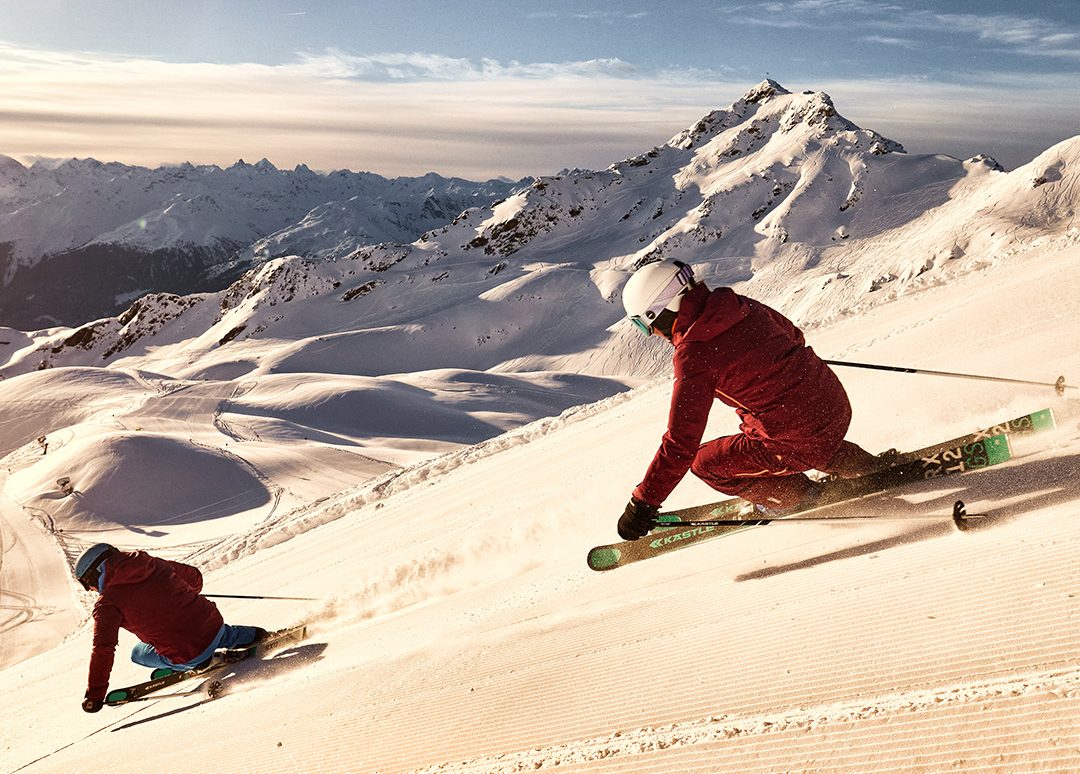
 Apres in Austria. | Image: Olivier Jongeneel
Apres in Austria. | Image: Olivier Jongeneel
Austrian winter tourism has once again grown, with Austrian hotels recording 72.38 million overnight stays during the 2024-25 winter, up 1.8% from 71 million in 2023-24. According to government organization Statistics Austria, this is still below the 2018-19 pre-pandemic season, which was the best winter season on record with 73 million overnight stays. Summer overnight stays in 2023 and 2024 broke the pre-pandemic record, but winter numbers are still lagging. More than a third of the winter season overnight stays were spent in four or five star hotels, with February being the busiest winter month, followed by January and March, while December is the quietest. November and April, as shoulder-season months, see the fewest overnight stays.
While the largest number of hotel stays are still recorded by visitors from neighboring Germany, the number of German hotel guests decreased by 1% to 25.94 million overnight stays. This decline, however, was more than compensated by other European guests, and overall Austria saw an increase of 0.8% in stays by guests from the 27 EU states.

 Saalbach offers 270 kilometres of ski slopes, making it one of the largest ski areas in Austria. | Image: Vail Resorts
Saalbach offers 270 kilometres of ski slopes, making it one of the largest ski areas in Austria. | Image: Vail Resorts
Several markets outside of Europe also showed incredible growth, both in percentage as well as in absolute numbers—including America. The biggest increase in both percentage as well as absolute terms came from guests from Israel, who almost doubled their numbers to 337,000 stays. In second place for biggest increase in absolute terms were visitors from the U.S. who accounted for an additional 130,000 nights compared to last year. This takes the total number of nights by U.S. tourists to 973,000, an increase of 15.4% from last year’s 843,000 nights. The U.S., with nearly 1 million stays, is Austria’s largest overseas market, but other overseas markets, like Australia, Brazil, and China are showing promising growth, increasing in overnight stays by 25.3%, 37.5%, and 21.3% respectively. In total, 358,000 U.S. visitors arrived in Austria during the 2024-25 winter, who stayed on average 2.7 nights.

 Silvretta Montafon, Austria, was added to the Epic Pass. | Image: Vail Resorts
Silvretta Montafon, Austria, was added to the Epic Pass. | Image: Vail Resorts
Austria is not the only country popular with American tourists. Switzerland also saw an increase of overnight from U.S. tourists stays during the 2024-25 winter season by 128,000 stays—an increase of 12.4%. This takes the total number of overnight stays by U.S. guests to 1.2 million, exceeding Austria’s number by roughly 230,000 nights. Famous Swiss ski resorts, such as Zermatt, St. Moritz, Verbier, and Grindelwald—have proven a powerful draw for North American travelers, many of whom are now using Vail Resorts’ Epic Pass, which since 2022 includes Andermatt-Sedrun and Crans-Montana since 2023. For the 2025-26 season, Vail Resorts has added six Austrian resorts and it will be interesting to see if the growth in U.S. visitors to Austria will see another boost from these Epic Pass additions. Up until now, Vail Resorts only had one Austrian ski resort, St. Anton am Arlberg, in its Epic Pass offering. It will be interesting to see if the addition of six Austrian resorts will impact U.S. visitation numbers in Austria. At this point, Austrian overnight stays are increasing at a faster pace than Swiss ones already—with 15.4% versus 12.4%—so it remains to be seen if this growth will accelerate next season.
It’s striking how differently winter tourism operates in these neighboring alpine nations, despite their geographical proximity, similar population size, and comparable winter sport offerings. Austria’s ski industry is more than twice the size in terms of skier visits than Switzerland’s and is heavily dependent on international visitors, which made the COVID-19 border closures especially devastating for its tourism sector. In contrast, Switzerland benefits from a stronger domestic tourism base, which helped cushion the blow during the pandemic and continues to shape its more balanced tourism model today, however, the ski industry is much smaller, with only around 23 million annual skier visits. What’s particularly remarkable about Austria is not just its high reliance on foreign guests, but also its underutilized capacity: the bed occupancy rate during winter hovers around just 42%. This suggests that Austria could, in theory, host almost twice the number of tourists it currently does — a fact that underscores both its potential for growth and its vulnerability to international travel disruptions.
In addition, the strong Swiss Franc makes Austria more attractive for foreign visitors. In fact, nearly 2 million Swiss will venture to neighboring Austria during the winter season as its hotels and ski resorts offer better value for money—a very important fact to consider when planning a European ski trip. While Switzerland is currently still more popular with American winter sport fans, Austria is quickly gaining ground and certainly has an offering to rival that of Switzerland. The country is home to a staggering 253 ski resorts with more than five ski lifts, so ultimately, the (ski) world in Austria is your proverbial oyster.

 Austria is increasing in popularity with American skiers. | Image: SnowBrains/AI
Austria is increasing in popularity with American skiers. | Image: SnowBrains/AI